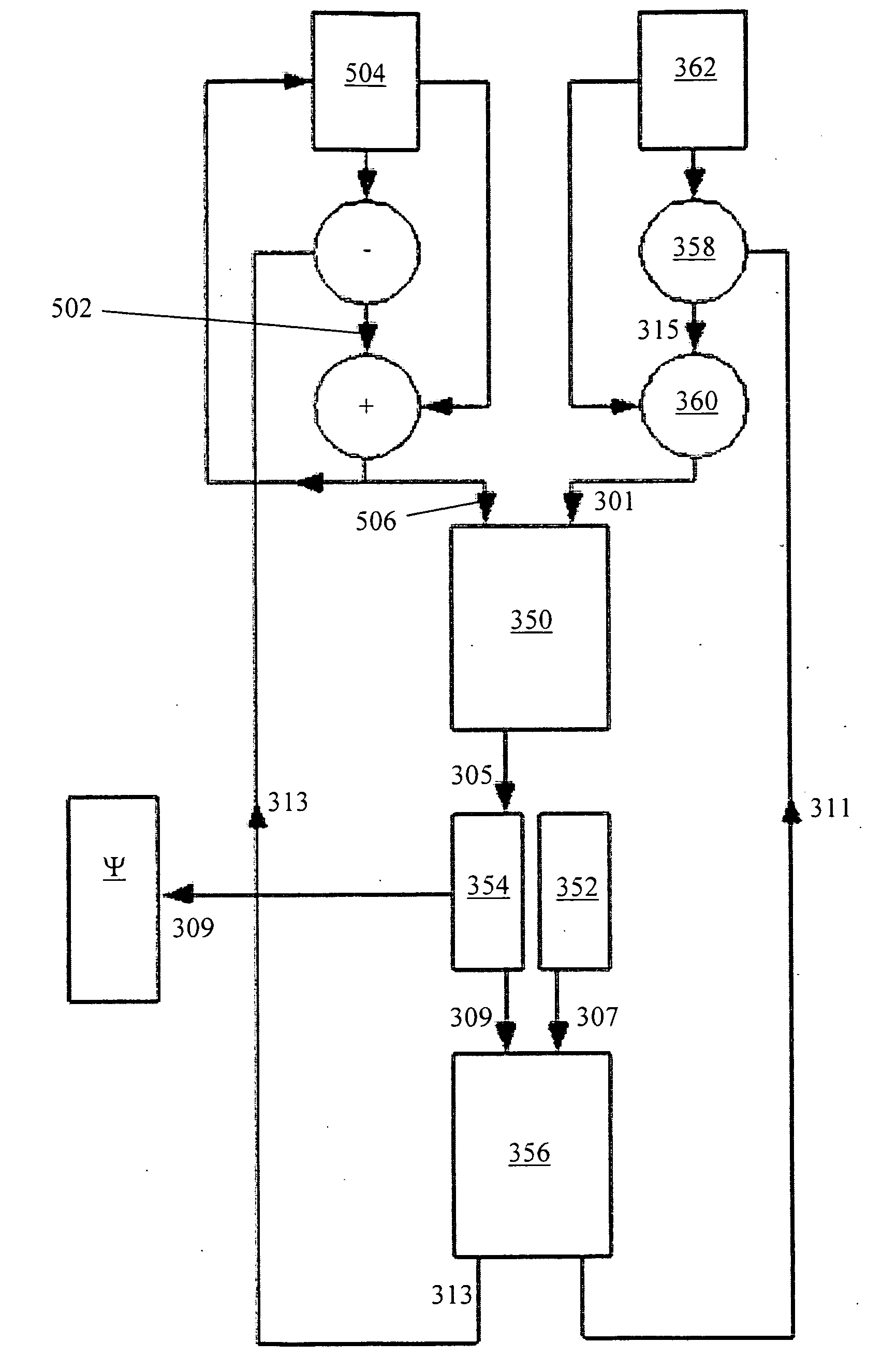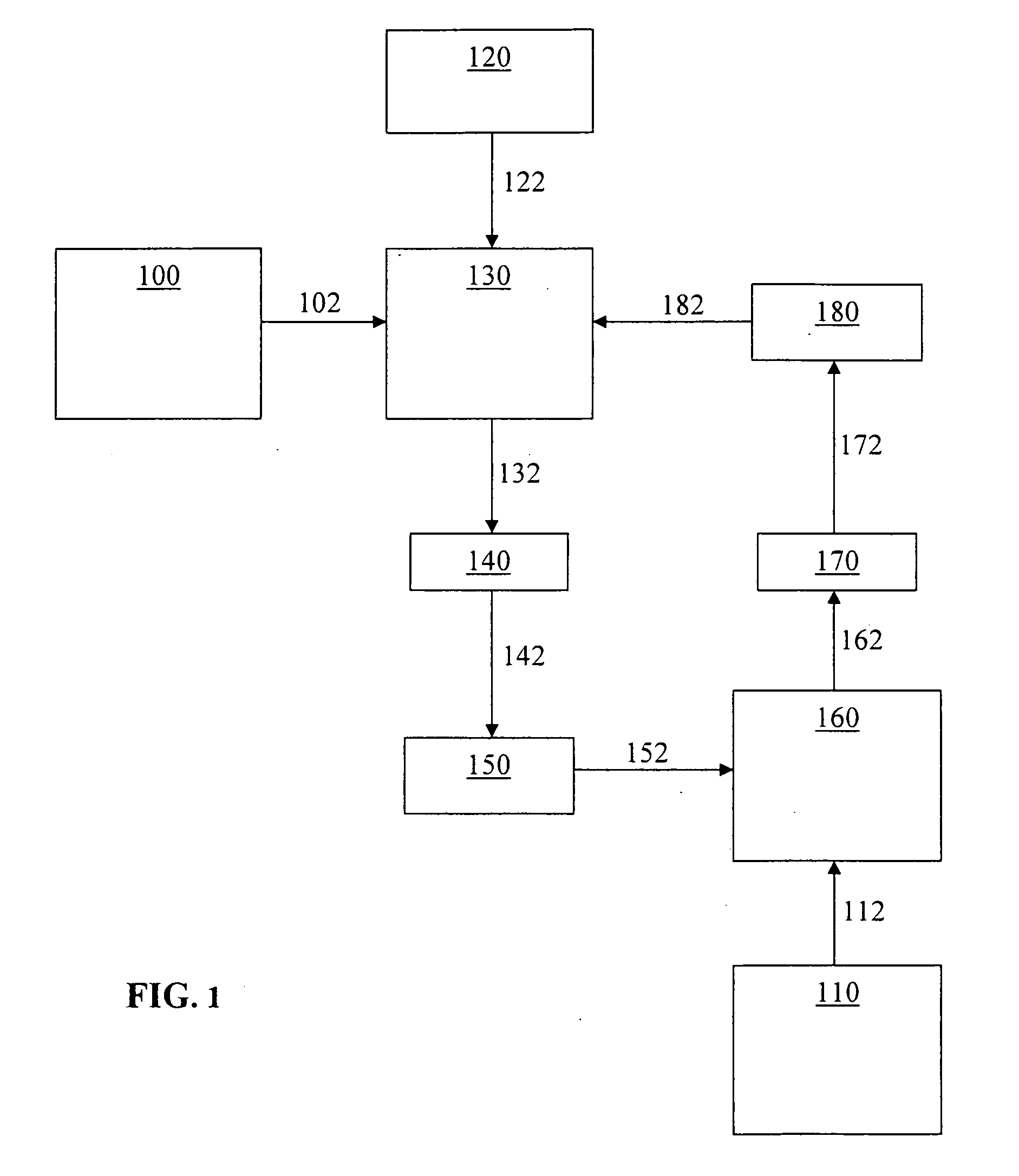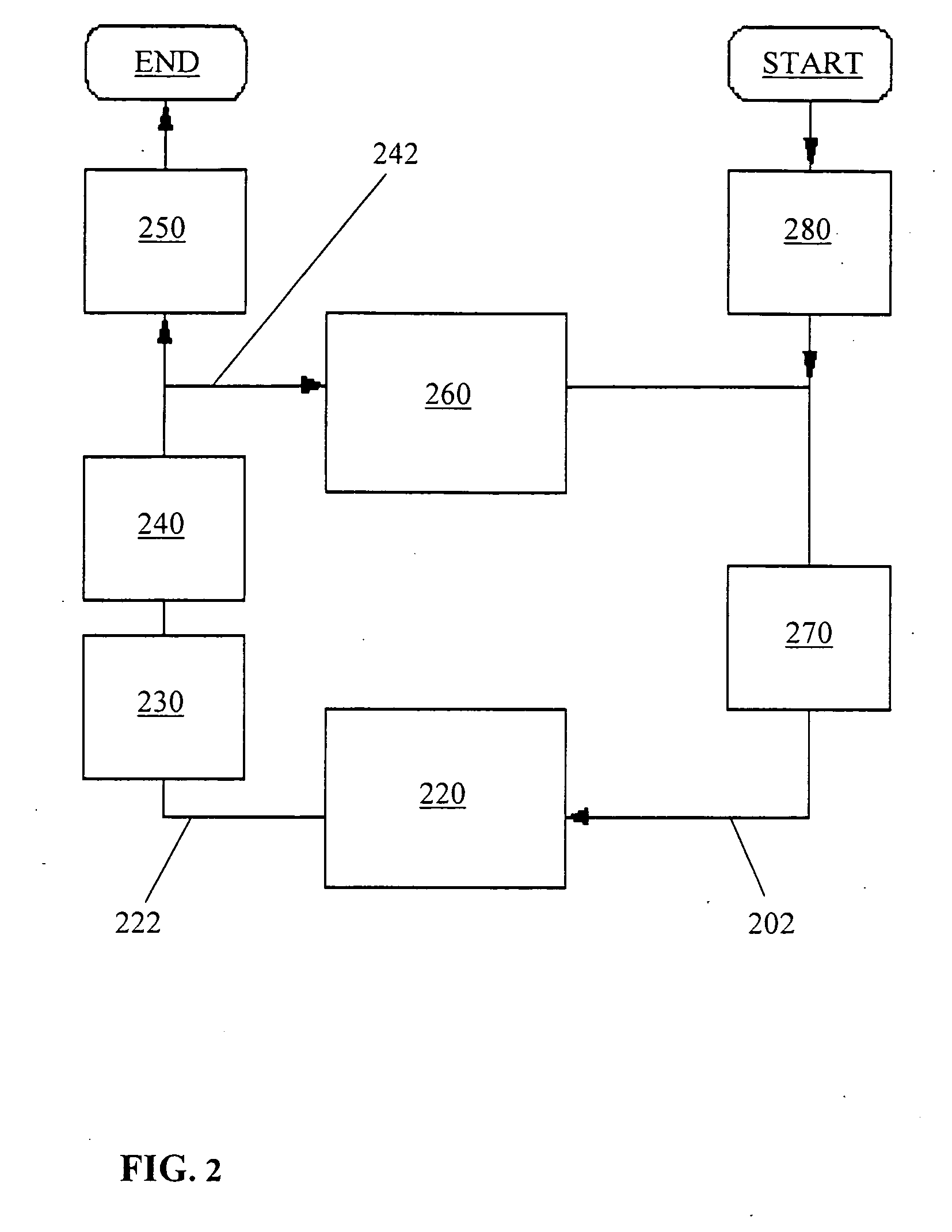Phase retrieval and phase hologram synthesis
a phase retrieval and phase hologram technology, applied in the field of phase retrieval, can solve the problems that the iterative gerchberg saxton algorithm lacks such as direct binary search algorithms, and achieves the effect of improving the quality of the other algorithms
- Summary
- Abstract
- Description
- Claims
- Application Information
AI Technical Summary
Benefits of technology
Problems solved by technology
Method used
Image
Examples
first embodiment
[0028]the present invention is shown in FIG. 3. The figure shows a modified algorithm which retrieves the phase information ψ[x,y] of the Fourier transform of the data set which gives rise to a known amplitude information T[x,y]362. Amplitude information T[x,y]362 is representative of a target image (e.g. a photograph). The phase information ψ[x,y] is used to produce a holographic representative of the target image at an image plane.
[0029]Since the magnitude and phase are intrinsically combined in the Fourier transform, the transformed magnitude (as well as phase) contains useful information about the accuracy of the calculated data set. Thus, embodiments of the present invention provide the algorithm with feedback on both the amplitude and the phase information.
[0030]The algorithm shown in FIG. 3 can be considered as having a complex wave input (having amplitude information 301 and phase information 303) and a complex wave output (also having amplitude information 311 and phase inf...
second embodiment
[0044]the present invention is shown in FIG. 4. This embodiment differs from the first in that the resultant amplitude information 402 from processing block 350 is not discarded. The target amplitude information 362 is subtracted from amplitude information 402 to produce a new amplitude information 404. A multiple of amplitude information 404 is subtracted from amplitude information 362 to produce the input amplitude information 406 for processing block 356.
[0045]In a third embodiment, the final image reconstruction quality is improved by increasing the number of pixels in the Fourier plane. Since the normal processing method is to use a Fast Fourier Transform (FFT), the number of pixels in the Fourier domain are increased to match the number of pixels in the spatial domain, however target image size will not be increased, with the image being padded with additional data. The same gain feedback method as the first embodiment may be used.
fourth embodiment
[0046]the present invention is shown in FIG. 5. This embodiment is the same as the first except that the phase is not fed back in full and only a portion proportion to its change over the last two iterations is fed back.
[0047]The phase information Rn[x,y]313 output by processing block 356 is not fed straight back into processing block 350 as in the first embodiment. The difference between the phase information output in the current 313 and previous 504 iterations (Rn[x,y]−Rn−1[x,y]) are calculated to give new phase information 502. A multiple, β, of phase information 502 is subtracted from the phase information Rn−1[x,y]504 of the previous iteration to give new input phase information 506 which provides the phase input for processing block 350. This may be expressed mathematically in the following equations:
Rn+1[x,y]=F′{iψn[u,v])}
ψn[u,v]=F{η exp(Iθ)}
η=T[x,y]−α(|Rn[x,y]|−T[x,y])
Θ=Rn−1[x,y]+β(Rn[x,y]−Rn−1[x,y])
[0048]Where:
[0049]F′ is the inverse Fourier transform;
[0050]F if the forwar...
PUM
 Login to View More
Login to View More Abstract
Description
Claims
Application Information
 Login to View More
Login to View More - R&D
- Intellectual Property
- Life Sciences
- Materials
- Tech Scout
- Unparalleled Data Quality
- Higher Quality Content
- 60% Fewer Hallucinations
Browse by: Latest US Patents, China's latest patents, Technical Efficacy Thesaurus, Application Domain, Technology Topic, Popular Technical Reports.
© 2025 PatSnap. All rights reserved.Legal|Privacy policy|Modern Slavery Act Transparency Statement|Sitemap|About US| Contact US: help@patsnap.com



